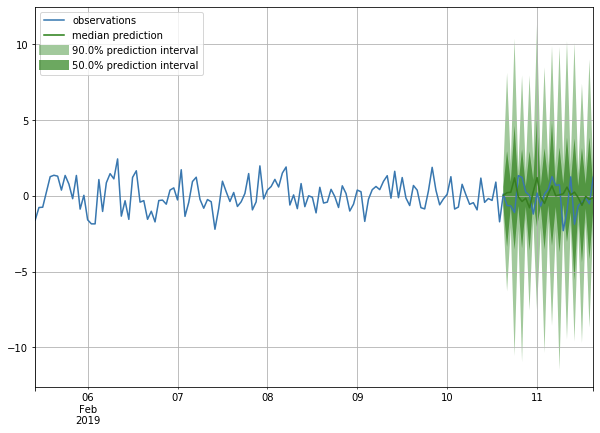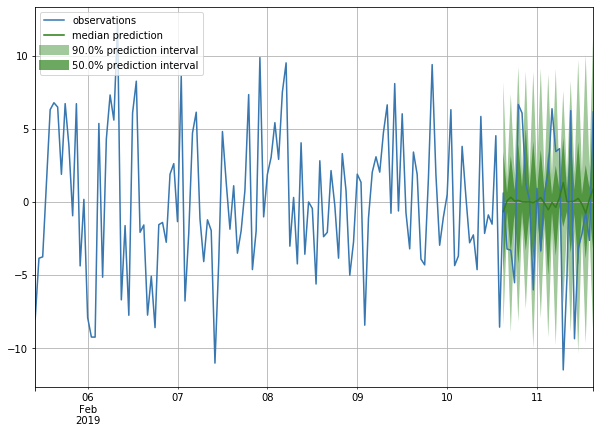Hi @FadhelA currently multivariate is not supported for DeepAR. We are aiming at releasing soon the code of High-dimensional multivariate forecasting with low-rank Gaussian Copula Processes which will enable for multivariate (dependent or independent).
Hello all,
I am trying to use DeepAR for multivariate time series forecasting. I am generating a bivariate time series, where each coordinate is independently sampled from a normal distribution. The first coordinate have mean 0 and variance 1, the second mean zero and variance 25. The algorithm seems to restrict the covariance matrix to lambda*Identity. I also tried the same code with the SimpleFeedForward model, and it works fine.
Here are the forecasts for each coordinate
Coordinate 1 (Normal(0,1))
Coordinate 2 (Normal(0,5))